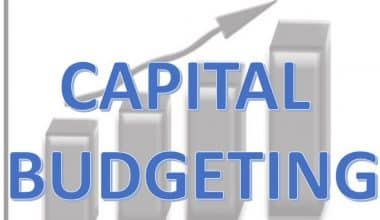Nowadays, pricing can be a continuous matter of concern for businesses, especially in the travel, tourism, and hospitality industries. As a result, many find themselves asking questions such as, “Should I increase my prices or cut them?” “What are the competitors doing?” “How will pricing decisions influence consumer reaction or behavior? Even though they frequently have profit-generating chances such as contingencies, events, and trends, these opportunities are seasonal. Therefore earnings come and go quickly for the company. Notwithstanding this, many industries have the potential to take advantage of rare opportunities and raise their profits. A fantastic starting point includes the yield management process. Businesses; hotels looking to strike a balance between supply and demand, or, in other words, between availability and pricing, may consider using yield management.
This detailed piece will give you more insight into the world of yield management as well as its pricing for hotels. Let’s get to it…
Yield Management Pricing
Basically, yield management pricing is a comprehensive word that defines how a service provider might maximize income from a relatively constant amount of available capacity.
The application of yield management pricing has several significant advantages in general. It improves a company’s ability to compete with a low-cost provider. Also, pricing based on yield management can be a more efficient method of allocating a service provider’s relatively finite capacity than just giving out discounts on a large scale.
Likewise, product manufacturers and service providers can use yield management to enhance the profit or income they generate. This however is from time-limited and fixed inventories by using a variable pricing strategy based on insights, anticipation, or control over customer behavior. As a result, the entire scenario, including the activity and effectiveness of competitors on the same day or week, must be taken into account. This is when describing each generating yield.
In other words, according to a forecast of demand for each time slot, a service marketer uses yield management pricing to continuously adjust its price levels. Generally, the primary goal of yield management pricing is to keep prices as low as possible while still ensuring that all available capacity is utilized. On the other hand, because low-cost competitors’ capacity is incredibly restricted, different market sectors have varied price elasticities. This, therefore, makes yield management a particularly effective price-matching tactic.
To put it another way, yield management isn’t just about pricing; it’s about more than that. Controlling prices in instances where pricing variables appear to discriminate is necessary after identifying the proper costs for the items or services. When it comes to pricing, the yield manager of a company must look at how different segments’ demand for a certain type of inventory is affected by price changes.
Yield Management for Hotels
Yield is a synonym for profit in the context of business. Basically, it’s your profit after paying all of your business’s expenses. However, in the context of hotels, yield management simply means the strategic setting of room prices to maximize revenue and occupancy. That is pricing and bookings volume.
To maximize hotels’ income and earnings, a yield management strategy relies on knowing, anticipating, and influencing your visitors’ behavior. In other words, we can just see it as the art underlying the science of supply and demand.
Generally, when airlines began using yield management to control supply and demand for flights, it sparked the development of revenue management. In certain cases, the cost of the same flight might have varied based on when the ticket was purchased and where it is being used. However, as early as the 1980s, hotels began employing the concept of yield management. This is by using specialist yield managers, who have since evolved into the present revenue or reservations managers. However, managers at smaller hotels are more likely to handle these responsibilities; yield management, than those in larger establishments.
Importance of Hotels Yield Management
Using yield management is the best way to for hotels capitalize on customer demand. However, doing so helps to ensure that hotel owners get the most out of their property. Typically, high fixed costs necessitate that hotels generate the most revenue feasible from these costs. Nevertheless, to save money on distribution and marketing costs, hotels must make the most of their existing customer base.
While profitability hinges on a company’s ability to control yield. Also, profitability rises dramatically if revenue increases while costs remain constant. This is because the new revenue is almost entirely profit. However, if sales fall but costs remain the same, profit will decline. Sudden drops in demand in the hotel industry can swiftly send hotels into crisis mode. By better managing hotels’ customer requirements, yield management mitigates part of the risk and helps optimize the benefit.
However, it might also seem practically impossible to execute these methods well enough without revenue software, no matter how effective they are. Nonetheless, a yield management system has several benefits, including the following:
- Find new ways to increase bookings, revenues, and profitability.
- Monitor your competitors’ prices in real-time so that you may set your prices in a way that maximizes your profit margin.
- Determine what kinds of events you want to be alerted about.
- Access all data, metrics, and tools from a single dashboard.
- Consider using new reporting, analytics, and visualization tools.
- Integrate with your PMS, booking engine, and channel management smoothly.
Calculating Hotels Yield Management
How do hotels figure out their profit margins using the yield management strategy? Basically, calculating yield can be useful in determining the price of a product. A simple approach is to divide earned revenue by the prospective revenue and multiply by 100. For instance, let’s say a hotel had twelve spaces available for rent at a rate of $250 each, it might earn $3,000 in income. Hence, there is a yield of 45% if the hotel rents out ten rooms for $135 each while its total revenue is 1350.
However, if demand is high, increasing the price to $250 would be a good bet. Therefore, just seven rooms will generate $1,750 in revenue and a 58% return on investment for the hotel. It’s also less expensive to service seven rather than ten rooms.
What Is Yield Management
Yield management is a set of methods and approaches to increase the profit margin of particular enterprises. However, managing rates, income streams, and distribution channels are just a few of the many facets of management control that go into this process
To put it another way, yield management is the selling technique of selling fixed inventory to the right customers at an appropriate price at an appropriate time. As a result of this, clients may be charged various prices for the same product or service.
In other words, a variety of approaches to yield management combines marketing, operations, and financial management into a very effective new strategy. Nonetheless, when developing and implementing yield management plans, yield management strategists must regularly collaborate with different departments.
Fundamentally, for profit maximization, yield management uses a variable pricing approach. Ones that are based on customer behavior analysis as well as market forecasts (such as airline seats or hotel room reservations, or advertising inventory). And, due to the many factors involved in the strategy, the same inventory (such as a hotel room or an airline ticket) is likely to be sold to various customers for different prices.
However, despite the obvious parallels between the two, yield management has been around longer than revenue management. In yield management, the focus is on the percentage of sales that result in a good return on investment.
A data-driven approach is used in yield management initiatives to make sure that pricing changes are made that will help the business.
Yield Management Strategies
The following yield management strategies will help your hotel produce more revenue:
#1. Let Data Help You Make Better Decisions
The first step is to set the tariffs for the next year. Keep up with the latest market conditions, historical demand, and booking pace. And also, the number of rooms you could sell if you had a limitless supply. Likewise, to help you plan forward, keep an eye on the effects of your pricing selections.
#2. Adapt Your pricing Strategy based on Market Conditions
Fundamentally, the style of strictly fixed prices is outdated. Typically, a dynamic pricing plan, or managing rates (increasing and dropping rates) either when demand is high or low, will help you earn more and adequate money. For example, rates can be adjusted according to the season and day of the week. While they can also be adjusted in reaction to the number of guests and the market conditions.
#3. Limit the Length of Time a Person can remain in the Hotel
For busy evenings, consider adopting stay limits like “closed to arrival” (CTA). Or maybe a minimal length of stay (MinLOS) to increase occupancy. Take your time to check the prices of competitors.
#4. Track Competitors Rates
Your competitors’ rates should be checked by you as well. Consider what your top competitors are charging for similar properties, then adjust your pricing accordingly. Use one or both of these tools to make the process of rate shopping and pricing intelligence as simple as possible.
#5. Price Your Goods and Services in a Variety of Ways
Rooms with a view, a balcony, or a particular bed configuration are more in demand. So, you should charge more for them. Packages, weekend rates, and discounts for direct reservations and long stays should also be available. This is to appeal to a wide range of people.
#6. Recognize the Different Types of Customers You’re Trying to Attract
There will be periods when different market segments are willing to pay different prices. While OTA distribution channels might be a viable source for last-minute reservations, wholesalers often book well in advance and expect lower rates. So, be aware of how and when your customers book your hotel rooms. This is so that you can fine-tune your pricing strategy accordingly.
#7. Don’t Let those Lovely Hotel Rooms go to Waste.
Give guests the option to upgrade their room before they arrive or at check-in with an appealing offer to move your perishable inventory and raise your average revenue per room.
Examples of Yield Management Action
Normally, consumer behavior is influenced by yield management in every industry. Here are a few examples of what we’re talking about:
#1. Going to a restaurant for a meal.
You’d want to dine out, but you’re on a restricted budget. To save money, ask about “early-bird specials” at your favorite neighborhood restaurants. The purpose of these promotions is to increase sales by luring in new clients outside of the busiest times of the day.
In another instance; a restaurant with lower foot traffic on Tuesday nights might offer special discounts or promotions to entice more customers to come on such nights.
#Airline Tickets rising in value
An airline may raise ticket prices in the summer to take advantage of the spike in tourists. And then offer the same amenities at a lower cost in the winter.
#2. Requesting transportation
If you a fan or client of ridesharing services like Uber, Lyft, or another one, you may find that the price of the same route varies during the day. Uber for example uses “surge pricing” in order to maximize revenue (and encourage additional drivers to service the region) during periods of high demand.
#3. A trip to the theater
In order to maximize ticket sales at the highest possible average price, theaters charge premiums for the most desirable seats and offer discounts for matinees, early purchases, as well as same-day tickets.
Conclusion
There are numerous benefits to employing yield management in hotels, including increased income, a better understanding of booking trends, fewer errors, and an improved perception of value. Fundamentally, selling the appropriate goods at precisely the right time to the right customers is all about timing since this is what it boils down to. However, it’s critical for hotels to learn how to use yield management to their advantage because occupancy is one of their primary concerns. Likewise, to get the most out of yield management, firms need a team of analysts and researchers that can do both at the same time.
FAQs
what is yield management system?
Yield Management Systems are vital to managing the revenue of organizations or businesses. You can deploy YMS in service companies that sell perishable goods, such as airline seats or hotel rooms.
Is yield management and revenue management the same?
Typically No. Yield management and revenue management are two of the most essential tools accessible to hotel managers which allow them to maximize the money they make from customers. Nevertheless, some fundamental differences exist between these two notions, despite their similarity.
What are the fundamentals of yield management?
In brief, yield management is a strategy centered on selling to the right client, at the right time, for the right price. Within the hotel industry, this often implies selling the correct room, to the right guest(s), at the best possible moment. This is for the maximum amount, to maximize the income generated.
What is the purpose of yield management pricing, and why does it exist?
The hotel industry uses yield management as a pricing technique to better understand, predict, and influence customer behavior in order to maximize revenue and profit.
Related Articles
- Pricing Strategy: Best strategies to Maximize profit
- FF&E: Overview, Procurement Process & Company Picks
- How To Maximize Potential Of A Food Business Franchise
- SBA 504 LOANS Requirements for Hotels & US Residents, Updated!!! (Detailed Guide)
- Pricing Strategies: Top 7 Examples of Pricing Strategies






